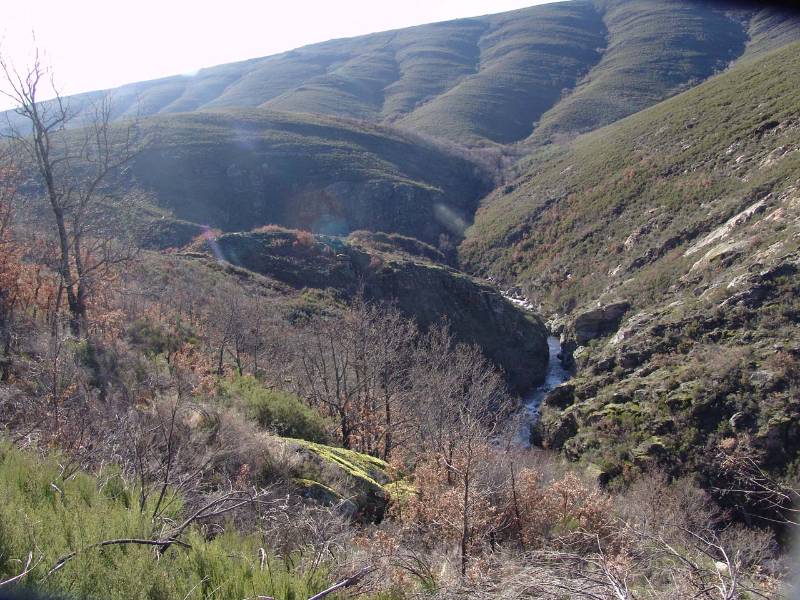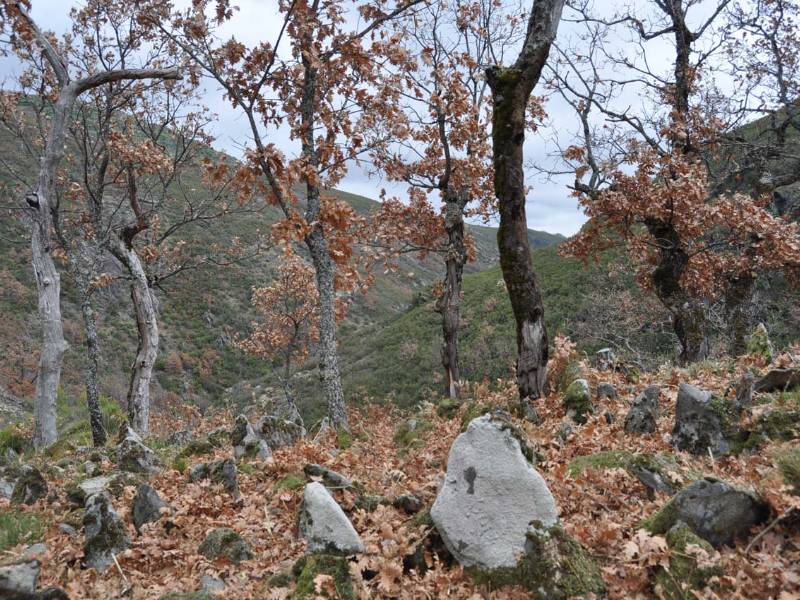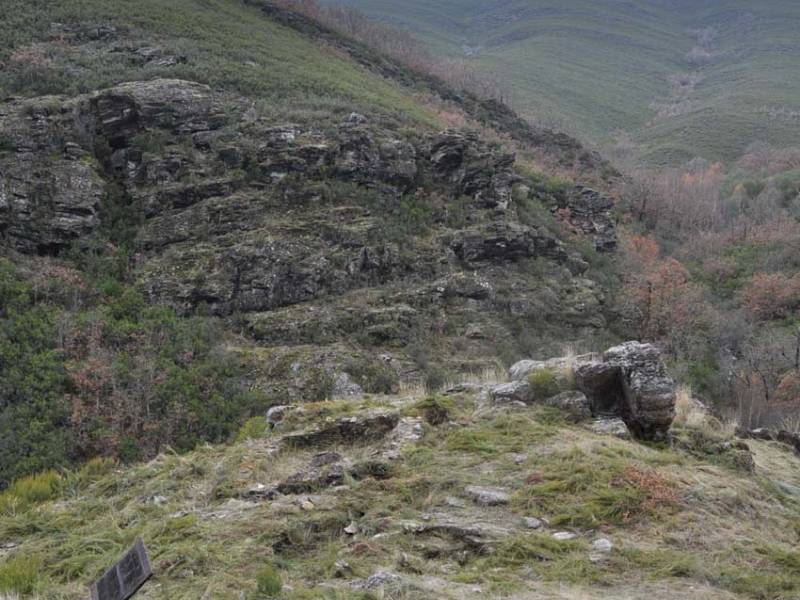Neolithic fortified settlement of As Muradellas
The castro de 'As Muradellas', is a depopulated area from the Second Iron Age (dates from the 3rd century BC), which was built with a notable defensive system. The inhabitants of this settlement chose this place for its easy natural defense, provided by the meander originated by the Tuela river and the rugged geography of this area. Its inhabitants could be Asturians, with livestock being their main livelihood.
It has some important defenses, you can see first a field of sunken stones and further on there are two parallel moats next to which the first line of walls stands. Crossing the wall, and entering the first enclosure, the defensive scheme repeats itself, although this time the moats are before the sunken stones. Finally, another wall protects an internal enclosure. Inside the second walled area were the buildings: the houses were built in an orderly manner taking advantage of the available space. Thus, two zones were created: intramural and extramural. The first safeguarded homes and livestock. The second was for hunting, fishing, pasture, mining.
Historical Data
- Architecture
- Archaeology site
- Construction
- Neolithic fortified settlement
- Historical Period
- Iron Age
Get to know the surroundings
Address and map location
- Postal address Lubián. NaN. Zamora
- Web
Tourist information
Lubián town hall
To know moreAddress and map location
- Postal address Calle Souto da Feira, 7. municipality of Lubián . 49570. Zamora
- Web
- Phones980 624 003
Zamora tourism office
Address and map location
- Postal address Avda. Principe de Asturias, 1. Zamora. NaN. Zamora
- Web
- Phones980 531 845
To know more



